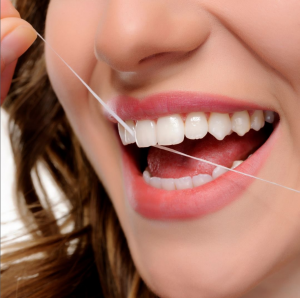Flossing, an essential component of oral hygiene, is a practice that should be simple and effective. Yet, many individuals unwittingly commit common flossing mistakes that undermine their efforts to maintain healthy teeth and gums. In this comprehensive exploration, we delve into the intricacies of these missteps, offering insights, solutions, and a deeper understanding of how to floss properly. From understanding the importance of flossing to recognizing the common pitfalls, we unravel the journey towards impeccable oral hygiene.
The Crucial Role of Flossing
Flossing, in conjunction with regular brushing, forms the foundation of maintaining oral health. Dental floss reaches areas that a toothbrush cannot, effectively removing food particles and plaque from between teeth and along the gumline. The proper technique ensures that bacteria don’t thrive in hidden spaces, reducing the risk of cavities, gum disease, and bad breath.
The Importance of Avoiding Flossing Mistakes
While flossing might seem straightforward, making mistakes in this seemingly simple practice can have lasting consequences. Understanding and rectifying these common errors is crucial for maintaining oral health and preventing more significant dental issues.
Common Flossing Mistakes and Solutions
- Skipping Flossing Altogether: Many individuals fall into the trap of thinking that brushing alone is sufficient. Flossing, however, targets areas that toothbrushes can’t reach.
Solution: Commit to a daily flossing routine. Establishing this habit can significantly improve oral health.
- Incorrect Flossing Technique: Improper flossing technique can lead to ineffective cleaning and potential damage to gums.
Solution: Learn the correct flossing technique, gently sliding the floss between teeth and forming a “C” shape around each tooth.
- Using Too Much Force: Aggressive flossing can damage the gums and cause them to bleed.
Solution: Floss with a gentle touch, avoiding forceful motions that can harm gum tissue.
- Reusing the Same Section of Floss: Reusing the same section of floss can spread bacteria and debris.
Solution: Use a clean section of floss for each tooth, ensuring thorough cleaning.
- Ignoring the Gumline: Neglecting the gumline while flossing can result in the accumulation of plaque and bacteria.
Solution: Gently glide the floss along the gumline, removing debris and plaque without causing irritation.
- Flossing Too Quickly: Rushing through the flossing process can lead to incomplete cleaning.
Solution: Take your time when flossing. Be thorough in cleaning between each tooth.
- Skipping the Back Teeth: Neglecting the back teeth during flossing can leave these areas vulnerable to decay.
Solution: Remember to floss all teeth, including those at the back of the mouth.
- Not Flossing Under Dental Work: Failing to floss under dental bridges, implants, or braces can lead to plaque buildup.
Solution: Incorporate special tools like floss threaders or interdental brushes to clean around dental work.
The Impact of Proper Flossing
When flossing is done correctly, it yields numerous benefits for oral health:
Preventing Tooth Decay: Proper flossing removes food particles and plaque, reducing the risk of cavities.
Gum Disease Prevention: Removing debris from between teeth and along the gumline helps prevent gum disease.
Fresh Breath: Flossing removes food particles that can lead to bad breath, promoting overall oral freshness.
Maintaining Dental Work: Proper flossing ensures that dental work, like crowns and bridges, remains clean and functional.
Reducing Inflammation: Effective flossing reduces the risk of gum inflammation and bleeding.
The Psychological Aspect of Flossing
Understanding the psychology behind flossing mistakes can offer insights into how to overcome them.
- Lack of Motivation: Flossing might seem mundane, leading to its neglect.
Solution: Recognize the long-term benefits of flossing and make it an integral part of your daily routine.
- Perceived Complexity: Some individuals avoid flossing due to perceived complexity.
Solution: Educate yourself on proper flossing techniques and practice until it becomes second nature.
- Instant Gratification: Flossing doesn’t yield instant results, making it easier to skip.
Solution: Focus on the long-term benefits of consistent flossing, and remember that prevention is key.
- Overcoming Dental Anxiety: Some individuals associate flossing with discomfort.
Solution: Use gentle flossing techniques and consider flossing aids that are more comfortable for you.
Flossing for Different Life Stages
Proper flossing techniques can vary based on age and life stages.
- Children and Teens: Teaching children the importance of flossing and making it a fun routine can set the foundation for lifelong oral hygiene habits.
- Adults: As adults face different dental challenges, flossing remains crucial for maintaining oral health and preventing issues like gum disease and decay.
- Elderly Individuals: Elderly individuals may require additional support in flossing due to factors like decreased dexterity or dental work.
Flossing, often overlooked or underestimated, is a vital component of oral hygiene. Recognizing and avoiding common flossing mistakes can significantly impact your oral health and overall well-being. By cultivating proper flossing techniques, understanding the psychology behind mistakes, and making flossing a consistent part of your daily routine, you’re setting the stage for a lifetime of strong, healthy teeth and a radiant smile.


